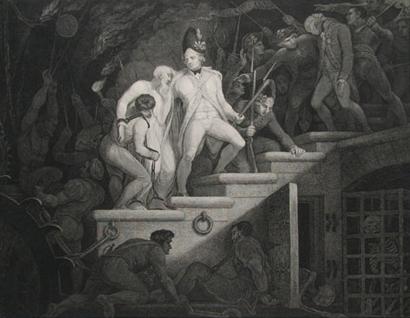British Museum show examining the British response to the French Revo-lution
THE YOUNG labourer has returned home, and all's well with the world. His wife greets him, love in her eyes, baby on her knee, while his two elder children gather cutely round; through the trees that shelter his modest cottage, you glimpse the spire of the parish church. William Hamilton's The Happy Cottagers, engraved in 1794, forces its message of god-fearing, humble rustic contentment down your throat with some lines from Gay: 'What happiness the rural maid attends, / In chearful labour while each day she spends . . .' It goes on, but you get the picture.
What, you might wonder, are the happy cottagers doing in 'The Shadow of the Guillotine' at the British Museum? There is not a guillotine in sight, and Gay's poem was written in the first half of the eighteenth century. But that, as this splendid exhibition makes clear, was the whole point. Given the mood of national paranoia provoked by events across the Channel, Hamilton's saccharine pastoral was charged with political significance, a homily on the benefits of the status quo. Never mind that most cottagers of the time were not, in fact, particularly happy - the period from 1794-6 was marked by crop failure and appalling shortages of food among the rural poor - this was just the sort of thing to convince them that they were.
'The Shadow of the Guillotine' is not about the French Revolution but the British response to it. As such, its true subject is the history of a distortion, the process by which an extremely complex series of events, and the vast political issues which they raised, were boiled down by the forces of propaganda to a series of stereotypes.
The storming...


